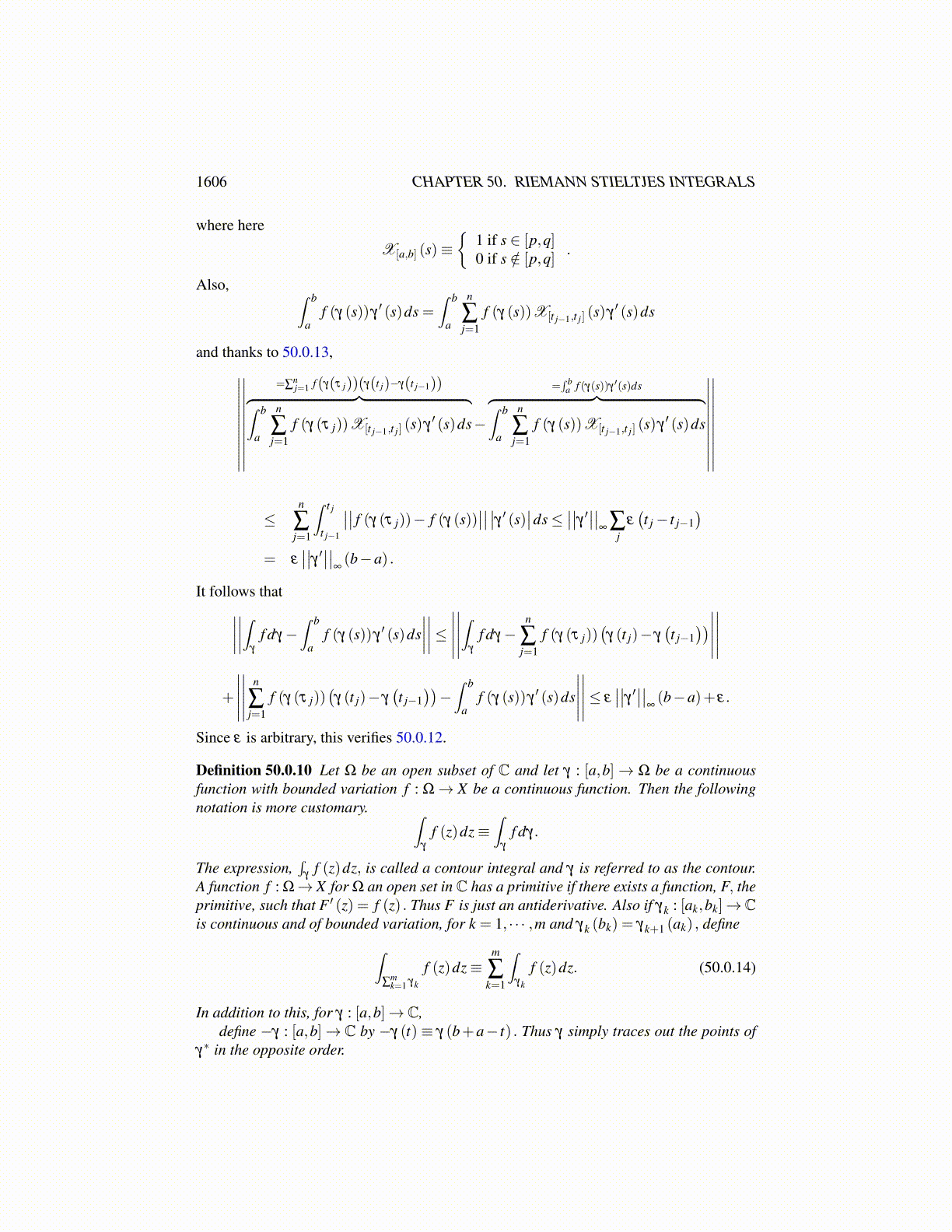
1606 CHAPTER 50. RIEMANN STIELTJES INTEGRALS
γ
(−2h+ t +
2hb−a
(t−a))(
1+2h
b−a
)}and so γh ∈C1 ([a,b]) . The following lemma is significant.
Lemma 50.0.8 V (γh, [a,b])≤V (γ, [a,b]) .
Proof: Let a = t0 < t1 < · · ·< tn = b. Then using the definition of γh and changing thevariables to make all integrals over [0,2h] ,
n
∑j=1
∣∣γh (t j)− γh(t j−1
)∣∣=n
∑j=1
∣∣∣∣ 12h
∫ 2h
0
[γ
(s−2h+ t j +
2hb−a
(t j−a))−
γ
(s−2h+ t j−1 +
2hb−a
(t j−1−a
))]∣∣∣∣≤ 1
2h
∫ 2h
0
n
∑j=1
∣∣∣∣γ(s−2h+ t j +2h
b−a(t j−a)
)−
γ
(s−2h+ t j−1 +
2hb−a
(t j−1−a
))∣∣∣∣ds.
For a given s∈ [0,2h] , the points, s−2h+ t j +2h
b−a (t j−a) for j = 1, · · · ,n form an increas-ing list of points in the interval [a−2h,b+2h] and so the integrand is bounded above byV (γ, [a−2h,b+2h]) =V (γ, [a,b]) . It follows
n
∑j=1
∣∣γh (t j)− γh(t j−1
)∣∣≤V (γ, [a,b])
which proves the lemma.With this lemma the proof of the theorem can be completed without too much trouble.
Let H be an open set containing γ∗ such that H is a compact subset of Ω. Let 0 < ε <dist(γ∗,HC
). Then there exists δ 1 such that if h < δ 1, then for all t,
|γ (t)− γh (t)| ≤1
2h
∫ t+ 2h(b−a) (t−a)
−2h+t+ 2h(b−a) (t−a)
|γ (s)− γ (t)|ds
<1
2h
∫ t+ 2h(b−a) (t−a)
−2h+t+ 2h(b−a) (t−a)
εds = ε (50.0.11)
due to the uniform continuity of γ. This proves 50.0.8.From 50.0.2 and the above lemma, there exists δ 2 such that if ||P|| < δ 2, then for all
z ∈ K, ∣∣∣∣∣∣∣∣∫γ
f (·,z)dγ (t)−S (P)
∣∣∣∣∣∣∣∣< ε
3,
∣∣∣∣∣∣∣∣∫γh
f (·,z)dγh (t)−Sh (P)
∣∣∣∣∣∣∣∣< ε
3